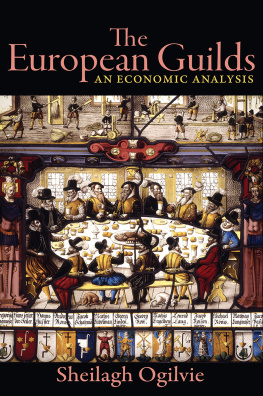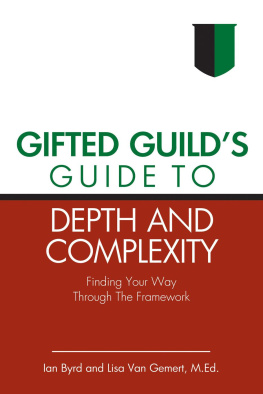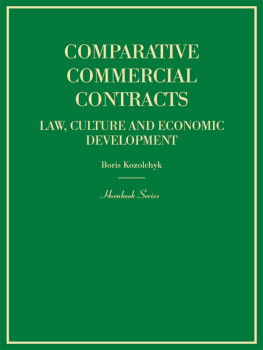
The European Guilds

The Princeton Economic History of the Western World
Joel Mokyr, Series Editor
The European Guilds
AN ECONOMIC ANALYSIS

Sheilagh Ogilvie
PRINCETON UNIVERSITY PRESS
PRINCETON AND OXFORD
Copyright 2019 by Princeton University Press
Published by Princeton University Press
41 William Street, Princeton, New Jersey 08540
6 Oxford Street, Woodstock, Oxfordshire OX20 1TR
press.princeton.edu
All Rights Reserved
Library of Congress Control Number: 2018949304
ISBN 978-0-691-13754-4
eISBN 978-0-691-18510-1
British Library Cataloging-in-Publication Data is available
Editorial: Sarah Caro and Hannah Paul
Production Editorial: Leslie Grundfest
Text Design: Lorraine Doneker
Production: Jacqueline Poirier
Publicity: Tayler Lord (US) and Julia Hall (UK)
Jacket art: Hieronymus Vischer, Festmahl der Seiler, 1615.
Historisches Museum, Basel. Photo: P. Portner
This book has been composed in Garamond Premier Pro
Printed on acid-free paper.
Printed in the United States of America
1 3 5 7 9 10 8 6 4 2
CONTENTS

FIGURES AND PLATES

TABLES

ACKNOWLEDGMENTS

I have been exceptionally fortunate to have so many friends and colleagues who gave their energy, time, and ideas to help improve this book. My special thanks go to Jeremy Edwards, who read several drafts, provided detailed comments, and encouraged me to say what I thought. I am very grateful to Joel Mokyr for inviting me to write the book, being patient with its long gestation, and showing incisively why criticism is a scholars best friend. In addition to providing intelligent and generous comments on the entire manuscript, Mathieu Arnoux shed particularly illuminating light on France and feudalism; Andrea Caracausi on Italy, quality control, and skills; Karel Davids on the Netherlands, apprenticeship, and technology; Erik Lindberg on Scandinavia, growth, and public institutions; Ulrich Pfister on proto-industry and central Europe; Francesca Trivellato on generalized institutions and discrimination; and Bas van Bavel on corporative-seigneurial relations and the methodological value of explicitly analyzing the characteristics of the biggest guild database ever compiled. Maria gren and Danielle van den Heuvel were so kind as to make very detailed and perceptive comments on the chapters relating to the political framework and to womens economic position. I am grateful to Steve Broadberry for an absorbing discussion of the most recent revisions to long-term historical estimates of European per capita GDP. A large number of friends and colleagues who work on the economic history of gender provided well-informed feedback on how guilds treated women; among them I would especially like to thank Anna Bellavitis and Judith Bennett for perspicacious comments on the chapter about guilds and women, Amy Erickson for advice and data on English female apprenticeship, and Ariadne Schmidt for clarifying mixed-sex guilds in the Netherlands.
I also take great pleasure in thanking the following friends and colleagues for stimulating conversations about particular aspects of the book, reactions to its arguments, and suggestions for further research: Daron Acemoglu, David Autor, Ying Bai, Alexi Baker, Marco Belfanti, Heinz Berger, Wim Blockmans, Marcel Boldorf, Jeremy Boulton, Chris Briggs, Andr Carus, Markus Cerman, Pierre-Andr Chiappori, Albrecht Cordes, Ron Couwenhoven, Guillaume Daudin, Roland Deigendesch, Tracy Dennison, Jan de Vries, Jessica Dijkman, David Do Pao, Jean-Pierre Dormois, Lars Edgren, Sepp Ehmer, Christiane Eisenberg, Giovanni Favero, Klaus Fischer, Laurence Fontaine, Oscar Gelderblom, Jessica Goldberg, Alberto Guenzi, Tim Guinnane, John Guthrie, Daryl Hafter, John Henderson, Sigrid Hirbodian, Ulrike Horstmann-Guthrie, Maria Hidvegi, Anton Howes, Margaret Hunt, Pavla Jirkov, Emily Kadens, Alexander Klein, Tom Klr, Mia Korpiola, Mark Koyama, Markus Kpker, Paola Lanaro, Patrick Lantschner, Dag Lindstrm, Jonas Lindstrm, Sofia Ling, Jan Lucassen, Paolo Malanima, Julie Marfany, Lenka Matukov, Eduard Maur, Deirdre McCloskey, Philippe Minard, Flavio Miranda, Craig Muldrew, John Munro, Travis Ng, Klas Nyberg, David Ong, Geoffrey Parker, Christopher Pihl, Natasha Postel-Vinay, Hanna Ostholm, Heikki Pihlajamki, Maarten Prak, Cristina Prytz, Cedric Quertier, Prateek Raj, Franois Rivire, Hrefna Rbertsdttir, Jim Robinson, Wouter Ryckbosch, Gran Rydn, Tom Safley, Patrick Schmidt, Nathan Schneider, Raphaelle Schwarzberg, Hamish Scott, Tom Scott, Paul Seabright, Kim Siebenhhner, Hannah Skoda, Simon Smith, Richard M. Smith, Peter Solar, Hugo Soly, Peter Spufford, Annemarie Steidl, Judy Stephenson, John Styles, Tim Taylor, James Thomson, Michael Toch, Jaume Torras Elias, Claudia Ulbrich, Jelle van Lottum, Elise van Nederveen Meerkerk, Patrick Wallis, Martin Weale, Anne Wegener-Sleeswijk, Christine Werkstetter, Merry Wiesner, Tony Wrigley, Lingwei Wu, Justyna Wubs-Mrozewicz, Heide Wunder, and Beatrice Zucca Micheletto.
I am grateful to the editors of the Journal of Economic Perspectives for inviting me to write an article discussing these findings on the economics of guilds in 2014, and to the Figuerola Institute for inviting me to deliver the 2016 Figuerola Lecture, which used the example of European guilds to answer the question, How Do Bad Institutions Survive?.
Finally, I would like to thank the many economists and historians who have engaged with these arguments at seminars, conferences, and lectures over the years, eloquently demonstrating that, within a framework of generalized institutions, a community of individuals pursuing the same occupation can indeed generate social capital that benefits everyone.
The European Guilds

CHAPTER 1

The Debate about Guilds
... [this ordinance is] for the good and profit of the craft and thecommonality of the people.
Hosiers guild ordinance, Paris, c. 1268
... they have enacted such ordinances... and have conspired to maintain and defend them, contrary to the regulations made for the common good of the city.
Judges describing the fishmongers guild, London, 1321
... [these privileges are] to bring utility and honour and piety not only to us, but also to the common weal.
Hatters guild privileges, Middle Rhine towns, 1477
... [under cover of their fraternity they act] to augment their craft at the expense of the Republic.
Complaint against the velvet-weavers guild, Toledo, 1562
... [the guild assembly and ordinances] are most important for thepublic good and utility.
Next page









